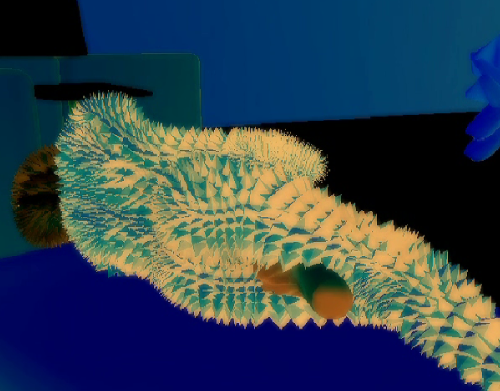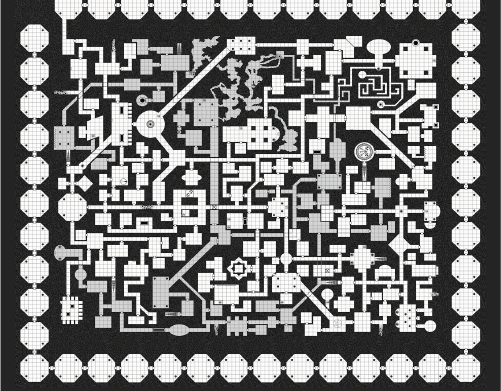Camp is Dead but She Looks Amazing
an essay by Sam Gurry
an essay by Sam Gurry
from MM01, released January 2019
Unlike Madonna, she loved Hydrangeas (via)
I am obsessed with Barbie. After several miniature men were born into my family, I showed up and the dolls quickly followed. Olympic Gymnast Barbie, Troll Fun Barbie, Totally Hair Barbie with Dep brand Styling mouse. As a child of the nineties having a Barbie wasn’t particularly notable, everyone had them. Unless they were wealthy and progressive in which case they were probably more of an American Girl Doll kind of person. Like that Dep brand styling mouse, I had something a bit extra. I didn’t just have a Barbie doll, I had a real life Barbie that I was obsessed with. Her name was Barbie and she cut my hair in her basement salon down the block.
Twist Growing up Skippers™ arm and she’ll grow a pair right before your eyes ! (via)
Barbie is my earliest association with Camp, though I didn’t realize it till much later. Her hair was black and piled high on her head, impossibly teased and pinned creating a beautiful bounce of hair. She had a toy poodle who sat in a satin pillow. Her husband, a beautiful man himself, was actually named Ken. I loved going to Barbie’s house with my mom, whether I was getting a haircut or not. Everything down in her basement was pink, red, and shiny. The walls were red. The chairs were red. Even the candy she had in glass containers was red, each sugar coated variation. She made me feel like magic, perched atop her salon chair on a booster seat ready to receive whatever bowl cut monstrosity my mother had predetermined for me. She reveled in her reality and so did I.
According to mom, she wasn’t that good at cutting hair. She would get distracted talking to you and leave one half noticeably shorter than the other. I didn’t care, I loved Barbie.
This is part of the classic definition of Camp. “So bad it’s good”. It’s the failed attempt at glamour, the almost there affluence, and put upon artifice. In that basement, it’s the opposite of so-called ‘cool’. Cool is worn black leather and messy hair. Cool doesn’t say much. Cool isn’t trying and it doesn’t care if you are aware of that. Camp is all effort. Camp did not wake up like this and actively made an effort to do whatever it is that is happening. It’s only one aspect of it and hardly the most compelling.
Camp, as viewed from above, it’s enticing. It’s easy to take so-called “poor taste”, twist it, and laugh. In high school, some of the more creative bros threw a “Farmer Joes and Garden Hoes” party encouraging the attendants to dress up and lean into the theme(Obviously, myself and the Anime club were not invited). It’s funny for the Hummer driving son of the Glade Plug-in inventor to dress up as a poor farmer because he is so far removed from it. Girls in Elly May pigtails with blacked out teeth can have fun celebrating the tawdry because come Monday they’ll be back to their Tiffany heart tags and highlights. Plainly, it’s mean.
My love affair with Barbie wasn’t because she had bad taste. I thought she was glamorous, just as she did. She fit an ideal of heightened femininity that had been instilled in me from all the media I gloriously consumed. I saw a lineage of Italian American high femininity come to fruition in her, from women that had used what was accessible for transformation.
Dear Mom, I am not yet enough of a princess. Please adjust accordingly.
It’s this attitude that makes Camp feel more relevant in our culture right now than it has in years. Good grooming, fine taste — All that is hard to attain. Just ask the state of New Jersey. We are in the midst of an economically unstable epoch. This generation has limited access to capital, a necessity in obtaining the markers of “good taste” as deemed by a contemporary aristocracy. You can scrounge to reach up, grasping what you can or you can reach down and elevate what you already have access to. We can dig through our cultural detritus and sit like the royals of the dismissed that we are.
In contrast to the “Farmer Joes”, I remember, too, childrens’ backpacks becoming its own trend. Some Black working class students would use small, brightly colored cartoon backpacks broadcasting a love of the Power Puff Girls or Spongebob Squarepants. A child’s backpack, while smaller, costs a lot less than one for an Adult. The backpacks eventually caught on all around, working their way up the trend ladder until white celebrities could be seen sporting similar looks purchased from subculture larcenist Jeremy Scott. At what point did this item of Camp go from being a celebration of sartorial accessibility to “so bad it’s good”?
It’s unclear where Troll Fun Barbie™ exists on the High vs. Low culture spectrum (via)
By reclaiming the trashed, we reject “high culture” and impressed societal values. It’s elevation can be a radical response enabling repressed peoples’ to exploit and critique mainstream mores. We don’t need your cultural values and, what’s more, we’ll activate what has already been let go. In a way, it’s claiming what Susan Sontag says in Notes On “Camp”, “What it does is to find the success in certain passionate failures.” Barbie moved to Cliffside Park after our neighborhood. It’s Blue Collar New Jersey retirement with a nice view of the Upper West Side. She’s bound to be the Bell of the Ball out there somewhere.
Outside of it’s more direct political utility, Camp can highlight our relationship with vulnerability. When you put yourself out there, you run the risk of rejection. We are social beings. We are hard wired to fear rejection to the point of distancing ourselves from our true feelings. Sontag says, Camp “is a kind of love, love for human nature”. My favorite kind of Camp is the one that elevates this human openness.
Springsteen did not write about this. Wildwood, NJ — Ruthless Films, 1994
If we look towards documentaries that fall into the Camp canon, it often reveals a focus on subjects living a niche, personal reality. We can view Wildwood, NJ, Grey Gardens, and Portrait of Jason as steadfast examples. Each film presents people being their authentic selves, stripped for the world to take in. This is a radical position for us, to be so vulnerable in such a public way is something our subconscious would actively fight against for self preservation. When we see this, our reaction can be to ridicule the subject and note their poor form and bad taste. In this action, we distance ourselves from that vulnerability by mocking it.
Vine has countless examples of this, or rather it would if it still existed(RIP). From almost dropping croissants to asking if clearly fake rats are real, the crux of many clips are the immediate vulnerability by it’s unwitting cast. We can see glimpses of a more authentic self with the potential addition of a facade being dropped. If behavior can also be of the comprised in “good taste”, the reversion to a more innate action reveals our true nature. While we mock it, we also delight in its inherent verisimilitude. “So bad it’s good”? As long as it’s not me.
After we left Barbie’s basement, we started going to a dedicated salon. It wasn’t red, instead pallid blues and country whites. Again, it was the ’90s. No more dogs on satin pillows, but there were Vidal Sassoon books filled with models in pouting frames. The scenery changes but my bowl cut end game had stayed the same. I missed Barbie for years and never quite had the same relish I did for getting my hair done as I had then. She had become my ideal of a certain femininity that I was enticed by and lauded. I stopped receiving Barbie Dolls once I reached adolescence and instead started receiving Tinker bell™ make up.
Camp may be dead, but she looks amazing.
In lieu of flowers, please pour jewels into her open coffin (via)









